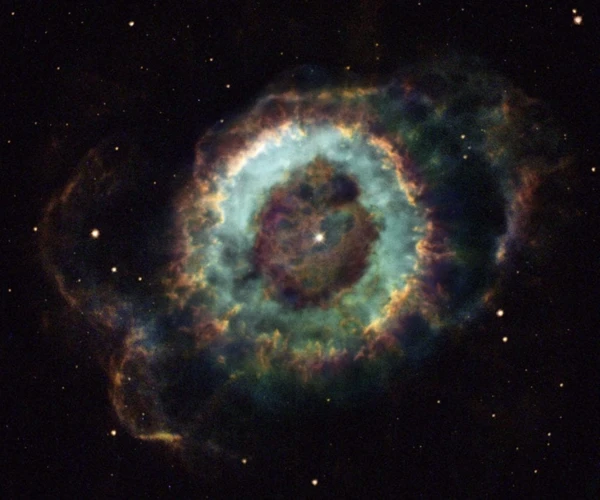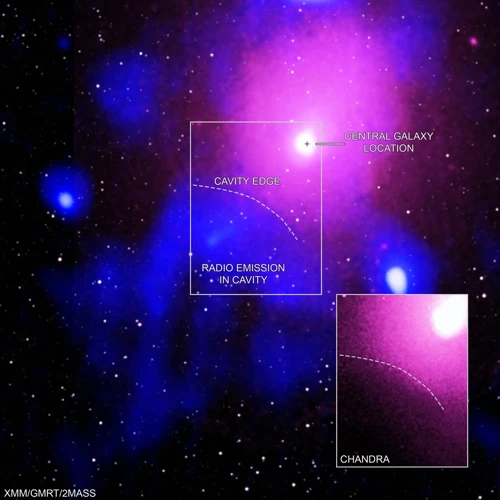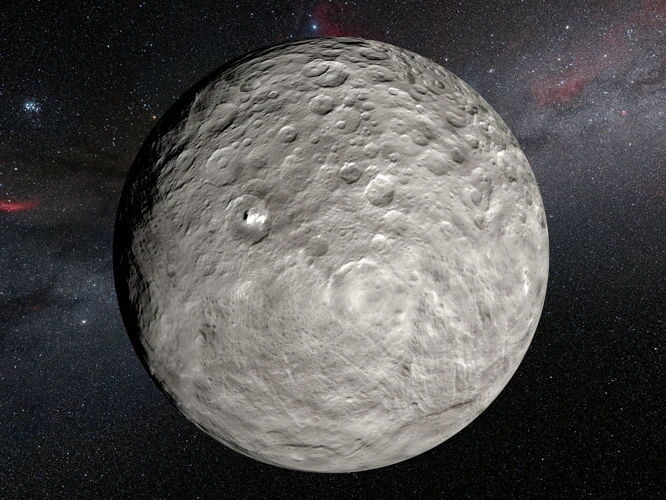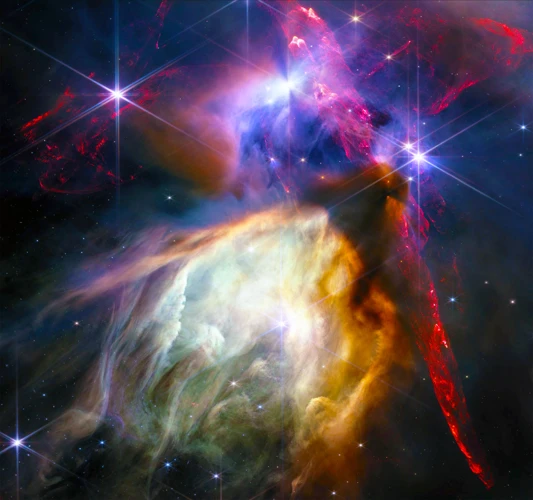Embark on a celestial journey as we delve into the mesmerizing wonders of our solar system. Brace yourself for an awe-inspiring adventure through space, as we explore the captivating mysteries and vibrant landscapes of the planets that reside in our cosmic neighborhood. From the scorching heat of the sun-kissed Mercury to the frigid enigma of distant Pluto, this guide will offer you a comprehensive overview of the celestial bodies that orbit our radiant star. Get ready to uncover breathtaking facts, intriguing discoveries, and awe-inspiring phenomena that will leave you astounded by the sheer magnitude and beauty of our solar system. So, fasten your cosmic seatbelts and prepare to embark on an interplanetary odyssey like no other.
Contents
- The Inner Planets
- The Outer Planets
- The Dwarf Planets
- Conclusion
-
Frequently Asked Questions
- 1. How far is Mercury from the Sun?
- 2. Does Venus have any moons?
- 3. Is Earth the only planet with liquid water?
- 4. What is the average temperature on Mars?
- 5. How many moons does Jupiter have?
- 6. Does Saturn have rings?
- 7. What is Uranus known for?
- 8. How long does it take for light from Neptune to reach Earth?
- 9. Is Pluto a planet?
- 10. What is special about the dwarf planet Eris?
- References
-
Frequently Asked Questions
- 1. How many planets are there in our solar system?
- 2. What is the main difference between the inner and outer planets?
- 3. Why is Mercury the smallest planet?
- 4. How is Venus different from other planets?
- 5. What makes Earth unique among the planets?
- 6. Can we live on Mars?
- 7. Why are Jupiter and Saturn called gas giants?
- 8. How is Uranus different from other planets in the solar system?
- 9. Why is Pluto considered a dwarf planet?
- 10. What is the significance of the discovery of the dwarf planet Eris?
- References
- Read More
The Inner Planets

The inner planets of our solar system, including Mercury, Venus, Earth, and Mars, are a fascinating quartet that captivate astronomers and space enthusiasts alike. Mercury, the closest planet to the sun, boasts extreme temperatures, with scorching hot days and frigid nights. Venus, often referred to as Earth’s sister planet, is shrouded in a thick atmosphere and experiences a runaway greenhouse effect, making it inhospitable for life as we know it. Our home planet, Earth, stands out as a unique haven that supports a diverse range of life forms and contains stunning landscapes, vast oceans, and a flourishing biosphere. Mars, often romanticized as the “red planet,” has hosted numerous missions in the quest for extraterrestrial life due to its potential for sustaining microbial life forms. With each planet offering its own set of tantalizing mysteries and scientific discoveries, the inner planets provide a captivating glimpse into the incredible diversity within our solar system.
Mercury
Mercury, the first planet in our solar system, holds a host of intriguing characteristics and secrets waiting to be unraveled. Here are some key facts about this enigmatic celestial body:
- Size and Proximity: Mercury is the smallest planet in our solar system, even smaller than some moons like Ganymede and Titan. Its size, coupled with its proximity to the Sun, contributes to extreme temperature variations, ranging from scorching hot during the day to freezing cold at night.
- Orbit and Rotation: Mercury has the shortest orbital period among all the planets, taking only about 88 Earth days to complete a full orbit around the Sun. Surprisingly, Mercury also exhibits a peculiar rotational pattern known as “tidal locking,” meaning it rotates on its axis exactly three times for every two orbits around the Sun, resulting in a unique day-night cycle.
- Surface: The surface of Mercury boasts a barren and heavily cratered landscape due to intense impacts from asteroids and comets. Its terrain is characterized by vast plains, rugged mountains, and deep cliff-like scarps that stretch for hundreds of kilometers.
- Thin Atmosphere: Unlike some of the other planets, Mercury has an exosphere, which is an extremely thin and tenuous atmosphere composed of various gases such as oxygen, hydrogen, helium, and traces of other elements. However, this atmosphere is so sparse that it cannot retain heat, contributing to extreme temperature fluctuations.
- Magnetic Field: Mercury surprises scientists with its relatively strong magnetic field, considering its small size. This magnetic field is believed to be generated by its partially molten iron core, making it the only planet other than Earth known to have such a global magnetic field.
With its mesmerizing traits and unique qualities, Mercury continues to intrigue astronomers and researchers as they seek to uncover more about this fascinating celestial body.
Venus
, the second planet from the sun, is a celestial marvel that has fascinated astronomers for centuries. Known as the “evening star” or the “morning star,” Venus is the brightest object in the night sky after the moon. Its striking beauty is heightened by a thick atmosphere composed largely of carbon dioxide, with traces of nitrogen and sulfuric acid. This atmospheric composition creates a greenhouse effect that traps heat, making Venus the hottest planet in our solar system, with surface temperatures soaring up to a scorching 900 degrees Fahrenheit (475 degrees Celsius). The planet’s atmosphere is so dense that it exerts a pressure 92 times greater than Earth’s, equivalent to being submerged 3,000 feet (900 meters) below the surface of the ocean.
Discovered by spacecraft missions, such as the Soviet Venera and NASA’s Magellan, Venus’s surface is veiled beneath thick clouds, making direct observation impossible. However, radar imaging technology has allowed scientists to gain insights into the planet’s topography. Venus exhibits a diverse range of geological features, including volcanoes, mountains, and vast plains. The planet is home to towering volcanoes, with Maat Mons being the highest peak, and vast lava flows that stretch across its surface.
Venus also experiences a unique phenomenon called “retrograde rotation,” where it rotates on its axis in the opposite direction compared to most planets. Instead of rotating from west to east like Earth, Venus rotates from east to west. This curious characteristic, combined with its dense atmosphere and sulfuric acid clouds, creates a mesmerizing visual effect known as the “Venusian halo,” best observed during sunrise and sunset.
Despite its beauty, Venus is an inhospitable world. Its extreme temperatures, thick atmosphere, and sulfuric acid clouds make it highly unlikely to support life as we know it. However, studying Venus provides valuable insights into the greenhouse effect, climate change, and the evolution of planetary atmospheres. It also holds clues to the early history of Earth, as both planets are thought to have had similar conditions in their early stages.
As we continue our cosmic journey, the next stop awaits us with open arms – our very own home planet, Earth.
Earth
The planet Earth, our cherished home in the vastness of space, is a wondrous and vibrant celestial body that encompasses a multitude of captivating features. With its diverse landscapes, breathtaking natural wonders, and thriving ecosystems, Earth stands out as a jewel in our solar system. This blue planet is predominantly covered by vast oceans, which not only support a rich array of marine life but also play a vital role in regulating the planet’s climate. The continents are home to awe-inspiring mountains, expansive deserts, lush rainforests, and sprawling grasslands, each teeming with their unique flora and fauna. Earth is also characterized by its dynamic atmosphere, which provides us with the oxygen we breathe and protects us from harmful solar radiation. Our planet’s atmosphere consists of different layers, including the troposphere, stratosphere, mesosphere, thermosphere, and exosphere. The troposphere, closest to the Earth’s surface, is where weather patterns occur and is crucial for sustaining life on our planet. Earth’s magnetic field, generated by its solid inner core and liquid outer core, plays a vital role in shielding the planet from the solar wind and cosmic rays. Earth is the only known celestial body to support an abundant variety of life forms, including plants, animals, and humans. From the microscopic organisms thriving in the depths of the ocean to the majestic creatures that roam the savannahs, life on Earth is a testament to the planet’s astounding biodiversity. As we continue to study and appreciate Earth’s beauty and significance, it is essential to recognize the importance of environmental conservation and sustainable practices to ensure the preservation of this remarkable planet for future generations. Truly, Earth is a remarkable world that inspires and nurtures life in all its splendor.
Mars
Mars, the fourth planet from the sun, has long fascinated astronomers and scientists due to its resemblance to Earth and the possibility of extraterrestrial life. Known as the “red planet” due to its rusty-colored surface, Mars has a thin atmosphere composed mainly of carbon dioxide. One of the most striking features of Mars is its towering volcano, Olympus Mons, which is the tallest volcano in the solar system. Mars also boasts the longest canyon in the solar system, Valles Marineris, which is more than four times deeper than the Grand Canyon.
In recent years, Mars has been the focus of numerous space missions, including the groundbreaking discoveries made by the Mars rovers. These missions have provided valuable insights into the planet’s geology, climate, and potential habitability. Scientists have found evidence of liquid water in the past, indicating the possibility of ancient microbial life on the planet. This has fueled speculation and further research into the potential for Mars to support future human colonization.
Mars experiences extreme weather patterns, with massive dust storms that can envelop the entire planet for months at a time. These storms pose challenges for robotic missions and potential human exploration in the future.
Despite its barren and harsh environment, Mars continues to captivate our imagination and holds the promise of unlocking the secrets of our neighboring planet. As technology continues to advance, further exploration and study of Mars will undoubtedly reveal even more intriguing discoveries that could reshape our understanding of the possibilities within our solar system.
Link: /legends-heroes-celtic-myth/
The Outer Planets

Venturing beyond the inner realms, we encounter the majestic outer planets of our solar system. Jupiter, the largest planet, boasts a mesmerizing display of swirling storms, including the iconic Great Red Spot. Its multitude of moons, including Ganymede, the largest moon in the solar system, and Europa, with its subsurface ocean, continue to pique the interest of scientists searching for signs of life. The gas giant Saturn, with its breathtaking rings made up of countless icy particles, presents a truly ethereal spectacle. Uranus, often described as an “ice giant,” offers a unique view with its tilted axis, causing it to appear to roll on its side. Finally, Neptune, with its vivid blue hues, showcases the power of its atmospheric storms, including the infamous Great Dark Spot. Each of these outer planets holds its own allure, from the intriguing cloud bands of Jupiter to the glittering rings of Saturn, making them a source of wonder and fascination for astronomers and space enthusiasts alike.
Jupiter
Jupiter, the largest planet in our solar system, commands attention with its immense size and mesmerizing beauty. This gas giant is known for its iconic bands of clouds, including the prominent Great Red Spot, a massive storm that has been raging for centuries. Jupiter’s atmosphere is composed mainly of hydrogen and helium, and its swirling storms and turbulent weather patterns create a captivating spectacle for astronomers to study. One of Jupiter’s intriguing features is its extensive system of moons, with over 80 moons discovered so far, including the four largest known as the Galilean moons: Io, Europa, Ganymede, and Callisto. These moons offer diverse geological features, such as volcanoes, icy surfaces, and potential oceans beneath their crusts, making them fascinating subjects for scientific exploration. Jupiter’s immense magnetic field is another notable characteristic, generating powerful radiation belts that pose a challenge for spacecraft passing by. Despite its colossal proportions, Jupiter completes a full rotation in just under 10 hours, resulting in its distinct oblate shape. This gas giant’s captivating allure and intriguing mysteries continue to fascinate scientists and stargazers alike, as we unlock the secrets hidden within the depths of its colossal atmosphere.
Saturn
Saturn, with its majestic and captivating beauty, is a celestial marvel within our solar system. This gas giant, known for its mesmerizing rings, is the second-largest planet. These rings, composed primarily of ice particles and debris, encircle Saturn and create a breathtaking spectacle. The gas giant’s prominent equatorial band, adorned with swirling clouds, gives it a distinct and recognizable appearance. Saturn’s atmosphere is mostly hydrogen and helium, similar to Jupiter, but its unique features make it stand out. For example, the hexagonal storm at Saturn’s north pole is a fascinating phenomenon that has puzzled scientists for years. Additionally, Saturn hosts numerous moons, with Titan being the largest and most intriguing. Titan’s thick atmosphere contains organic compounds, and it has bodies of liquid hydrocarbons on its surface, making it an area of interest for studying the potential for life beyond Earth. The Cassini spacecraft, which explored Saturn and its moons for over a decade, provided invaluable insights into this enigmatic planet. Its mission showcased the intricate details of Saturn’s rings, discovered new moons, and shed light on the planet’s dynamic weather patterns. Saturn’s sheer beauty, intricate features, and scientific significance continue to enthrall scientists and stargazers alike, making it a fascinating destination within our cosmic neighborhood.
Uranus
Uranus, named after the Greek god of the sky, is a unique and mysterious planet in our solar system. It is the seventh planet from the Sun and is known for its distinct feature of a sideways rotation. Unlike most other planets, Uranus spins on its side, with its axis tilted at a whopping 98 degrees. This unusual axial tilt causes extreme seasonal variations, with each pole experiencing around 42 years of continuous darkness and another 42 years of continuous sunlight. The atmosphere of Uranus mainly consists of hydrogen and helium, with traces of methane giving the planet its characteristic blue-green hue.
One of the most fascinating aspects of Uranus is its system of rings. While not as prominent or extensive as Saturn’s rings, Uranus also possesses several narrow, dark rings composed of dust particles and small rocks. These rings were discovered during a close approach by the Voyager 2 spacecraft in 1986.
Uranus is also known for its collection of moons. The planet has 27 known moons, each with its own unique characteristics and features. The largest of these moons is Titania, followed by Oberon, Umbriel, Ariel, and Miranda. These moons offer an intriguing glimpse into the complex dynamics of Uranus’ gravitational interactions.
Despite its captivating features, Uranus remains relatively unexplored compared to other planets in our solar system. Only a single spacecraft, Voyager 2, has visited Uranus, providing valuable data and images during its flyby. Further exploration and study of Uranus hold the potential for unlocking even more secrets about the planet’s composition, formation, and evolution.
As we continue our cosmic journey through our solar system, Uranus stands out as a mysterious and enigmatic planet, inviting further exploration and scientific discovery. Its unique characteristics and intriguing features make it a captivating celestial body worthy of our curiosity and fascination.
Neptune
Neptune, the eighth and farthest planet from the Sun, is a mesmerizing gas giant that holds many captivating secrets. This majestic celestial body, named after the Roman god of the sea, boasts a stunning blue hue due to the presence of methane in its atmosphere. With a diameter of approximately 30,600 miles, Neptune is just slightly smaller than its neighbor Uranus. Its atmosphere is composed mostly of hydrogen, helium, and methane, giving it a unique and characteristic appearance.
One of the most fascinating features of Neptune is its turbulent weather patterns. The planet is known for its impressive storm systems, including the Great Dark Spot, a massive storm comparable in size to the Earth. Additionally, Neptune experiences powerful winds, with speeds reaching up to 1,500 miles per hour, making it one of the windiest places in our solar system.
Neptune also has a fascinating moon system, boasting a total of 14 known moons. Among them is Triton, the largest moon, which is believed to have been captured by Neptune’s gravitational pull. Triton is unique because it is the only large moon in our solar system that has a retrograde orbit, meaning it orbits in the opposite direction of its planet’s rotation.
Exploring Neptune has been a challenge due to its vast distance from Earth, with the spacecraft Voyager 2 being the only probe to have visited this distant planet back in 1989. However, scientists and astronomers continue to study Neptune using various telescopes and instruments from Earth.
Neptune is a captivating celestial body that continues to amaze and intrigue us with its vibrant blue color, tumultuous weather patterns, and enigmatic moon system. As we continue to unravel the mysteries of this distant gas giant, our understanding of the complexities of our solar system expands, allowing us to appreciate the vastness and diversity of the cosmos.
The Dwarf Planets

Among the celestial objects that defy traditional planetary classification, the dwarf planets offer an intriguing glimpse into the diversity of our solar system. The most famous of these is Pluto, which was reclassified as a dwarf planet in 2006. Pluto, once considered the ninth planet, resides in the distant Kuiper Belt and has a complex and varied terrain with icy mountains, plains of nitrogen ice, and a thin atmosphere. Another noteworthy dwarf planet is Ceres, which is found within the asteroid belt between Mars and Jupiter. Ceres is the largest object in this region and is unique as it contains a significant amount of water ice. Lastly, we have Eris, which is located beyond Pluto in the scattered disc. Eris is slightly larger than Pluto and is known for its highly elongated orbit. These dwarf planets provide further evidence of the vast array of celestial bodies that exist beyond the traditional planets of our solar system, expanding our understanding of the cosmos.
Pluto
Pluto, once considered the ninth planet in our solar system, has a mystique that continues to capture our imagination. This enigmatic dwarf planet, located in the far reaches of our celestial neighborhood, is known for its distant and icy existence. With a highly elliptical and tilted orbit, Pluto’s journey around the sun takes approximately 248 Earth years. Its surface is composed of a variety of intriguing features, including towering mountains of frozen water, nitrogen, and methane, offering a mesmerizing landscape for exploration. In 2015, NASA’s New Horizons spacecraft made a historic flyby of Pluto, revealing stunning details about its complex geology and atmosphere. We now know that Pluto possesses a thin atmosphere consisting primarily of nitrogen, with traces of methane and carbon monoxide. Its unique terrain includes vast plains, mountain ranges, and even a large heart-shaped feature named Tombaugh Regio, in honor of the astronomer who discovered Pluto. While no longer classified as a planet, Pluto remains an object of fascination and curiosity, reminding us of the vastness and diversity of our solar system. To learn more about the fascinating celestial bodies, continue your journey of exploration in our Ophiuchus Zodiac Sign Traits article.
Ceres
Ceres, the largest object in the asteroid belt between Mars and Jupiter, is a captivating and enigmatic dwarf planet that holds many secrets within its icy exterior. Named after the Roman goddess of agriculture, Ceres is believed to have a rocky core surrounded by a layer of ice and a thin atmosphere. Its surface is pocked with impact craters, some of which reveal bright spots that have intrigued scientists for years. These bright spots are believed to be deposits of salt or ice, and they have sparked debates about the nature and origin of Ceres’ subsurface. Recently, NASA’s Dawn spacecraft provided valuable insights into Ceres by capturing high-resolution images and collecting data on its composition and geology. This data revealed that Ceres likely has a complex history, with evidence of ancient cryovolcanism and a possible subsurface ocean. The study of Ceres not only helps us better understand the evolution of our solar system but also provides valuable insights into the potential for water and life beyond Earth. Its intriguing nature makes Ceres a subject of ongoing research and exploration, promising to unravel more of its mysteries in the future.
Eris
Eris, named after the Greek goddess of strife and discord, is a dwarf planet located in the outer regions of our solar system. This enigmatic celestial body was discovered in 2005 and played a significant role in redefining the definition of a planet. Eris is roughly the same size as Pluto and resides in the Kuiper Belt, a region beyond Neptune that is home to numerous icy bodies. is composed primarily of rock and ice, and its surface is heavily covered in frozen methane and nitrogen. It takes Eris approximately 557 Earth years to complete one orbit around the sun, making its journey through the cosmos quite leisurely. The dwarf planet has its own moon, Dysnomia, which orbits it once every 16 days. With its eccentric orbit and distant location, Eris remains a mysterious and intriguing celestial object, offering valuable insights into the outer reaches of our solar system.
Conclusion

As we conclude our celestial journey through the planets of our solar system, we are left in awe of the vastness and splendor of the cosmic realm. Each planet we explored, from Mercury to Pluto, revealed unique characteristics and unveiled a wealth of scientific knowledge. The inner planets, Mercury, Venus, Earth, and Mars, showcased a wide range of conditions and possibilities for extraterrestrial life. The outer giants, Jupiter, Saturn, Uranus, and Neptune, mesmerized us with their colossal size and breathtaking atmospheres. Even the dwarf planets, such as Pluto, Ceres, and Eris, reminded us of the diversity and mysteries that reside in the outer regions of our solar system. Our journey through the celestial bodies has highlighted the remarkable achievements of human exploration and deepened our understanding of the vast universe we inhabit. The wonders of space continue to beckon us, urging us to delve deeper into its mysteries and inspire future generations to reach for the stars. So, let us continue to explore, discover, and marvel at the beauty and complexity of the cosmos, for there is always more to unravel and embrace.Friendship
Frequently Asked Questions

1. How far is Mercury from the Sun?
Mercury is approximately 36 million miles (58 million kilometers) away from the Sun.
2. Does Venus have any moons?
No, Venus does not have any moons orbiting around it.
3. Is Earth the only planet with liquid water?
Yes, Earth is the only known planet in our solar system to have liquid water on its surface.
4. What is the average temperature on Mars?
The average temperature on Mars is around -80 degrees Fahrenheit (-62 degrees Celsius).
5. How many moons does Jupiter have?
Jupiter has a staggering 79 known moons, the largest of which is Ganymede.
6. Does Saturn have rings?
Indeed, Saturn is famous for its stunning and expansive ring system.
7. What is Uranus known for?
Uranus is known for its striking feature of rotating on its side, tilted at an angle of about 98 degrees.
8. How long does it take for light from Neptune to reach Earth?
It takes approximately 4 hours and 8 minutes for light from Neptune to reach Earth, depending on the positions of the two planets in their respective orbits.
9. Is Pluto a planet?
Pluto is now classified as a dwarf planet, as of the redefinition of the term set by the International Astronomical Union (IAU) in 2006.
10. What is special about the dwarf planet Eris?
Eris is larger than Pluto, and its discovery in 2005 played a significant role in the reclassification of Pluto as a dwarf planet. Eris is also known for its highly eccentric orbit around the Sun.
References
- Planets 101: What they are and how they form
- Exploring Our Solar System: Planets and Space for Kids
- 20 Best Solar System Books of All Time
Frequently Asked Questions

1. How many planets are there in our solar system?
There are eight planets in our solar system: Mercury, Venus, Earth, Mars, Jupiter, Saturn, Uranus, and Neptune.
2. What is the main difference between the inner and outer planets?
The main difference between the inner and outer planets is their location in the solar system. The inner planets, including Mercury, Venus, Earth, and Mars, are located closer to the sun, while the outer planets, such as Jupiter, Saturn, Uranus, and Neptune, are situated farther away.
3. Why is Mercury the smallest planet?
Mercury is the smallest planet because it is positioned closest to the sun. Its proximity to the sun’s gravitational pull caused it to lose a significant portion of its original atmosphere and materials during the formation of the solar system.
4. How is Venus different from other planets?
Venus is often referred to as Earth’s sister planet because of its similar size, composition, and proximity to the sun. However, Venus has a thick atmosphere comprised mainly of carbon dioxide, which results in a runaway greenhouse effect, making it the hottest planet in our solar system.
5. What makes Earth unique among the planets?
Earth is the only known planet to support life. It has a diverse range of ecosystems, including forests, oceans, and deserts. Additionally, Earth has a protective atmosphere that shields it from harmful solar radiation and a suitable climate for the existence of liquid water.
6. Can we live on Mars?
The potential for human colonization on Mars has been a topic of scientific exploration and debate. While Mars has similarities to Earth, such as a 24-hour day and the presence of water ice, it lacks a breathable atmosphere and faces extreme temperatures. Future missions aim to investigate the possibility of sustaining human life on Mars.
7. Why are Jupiter and Saturn called gas giants?
Jupiter and Saturn are called gas giants because they mainly consist of hydrogen and helium gases. These planets have relatively small solid cores surrounded by thick atmospheres composed of gas and clouds that extend thousands of kilometers into space.
8. How is Uranus different from other planets in the solar system?
Uranus stands out in the solar system due to its unique rotational axis. Unlike other planets, which have an axis perpendicular to their orbit, Uranus rotates on its side. This peculiarity results in extreme seasonal variations, with one pole facing the sun for a significant portion of its orbit.
9. Why is Pluto considered a dwarf planet?
Pluto is considered a dwarf planet because it does not meet the International Astronomical Union’s criteria for a full-fledged planet. According to the IAU definition, a planet must clear its orbit of other debris, and Pluto shares its orbit with other objects in the Kuiper Belt.
10. What is the significance of the discovery of the dwarf planet Eris?
The discovery of the dwarf planet Eris led to the reclassification of Pluto as a dwarf planet. Eris is larger than Pluto and resides within the Kuiper Belt, a region of icy objects beyond Neptune. This finding prompted scientists to redefine what constitutes a planet and sparked further study into the distant reaches of our solar system.
References
- Solar system planets, order and formation: A guide
- Exploring the Planets in Our Solar System (Objects …






